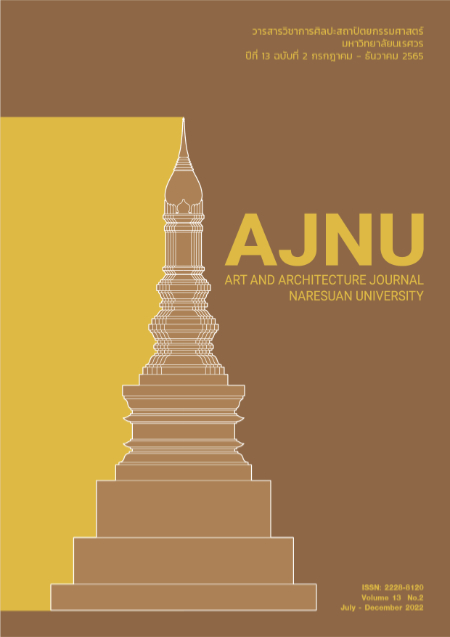Dielectric properties of straw walls and the thickness suitable for the construction of a straw wall building
Main Article Content
Abstract
The objective of this research is to study the dielectric properties of straw walls. And suitable thickness to prevent heat for the construction of straw walls in Thailand From the study of the wall properties made from rice straw, it has the potential to Is an insulator preventing heat from entering the building The straw walls also use rice straw, which is a waste product from agriculture. Rice is the main agricultural crop in Thailand, the rice straw as agricultural waste in all regions of Thailand.
The study is divided into two parts. The first part is to study the thermal conductivity behavior of the dense compressed straw walls. Is compressed with human power and compressed by machine power from then, the data obtained is the data to simulate the thickness of each straw bale using computer simulation system Computational Fluid Dynamics
The results of the research show that the straw wall has insulating properties. The test box uses straw walls with a thickness of 0.20 meters. The straw walls are pressed by machine power with density of 101.43 kilograms / cubic meter. And straw walls pressed from human strength with a density of 67.14 kg / cubic meter. It was found that the density of both straw walls had similar behavior, which could delay the heat in the straw wall for about 20 minutes, allowing the heat to flow slightly to the other side. Therefore taking the information from the experiment box Build models to find suitable wall thickness. Computer program it was found that the thick walls of 0.10, 0.20, 0.30 and 0.40 meters have similar heat protection properties.
Article Details

This work is licensed under a Creative Commons Attribution-NonCommercial-NoDerivatives 4.0 International License.
References
ณัฐวดี สัตนันท์. (2560). ใต้ถุนเรือน...การเปลี่ยนผ่านจากอดีตสู่ปัจจุบัน ศศ.ม. มหาวิทยาลัยศิลปากร, กรุงเทพ.
Adedeji, A. A. (2007). Introduction And Design Of Straw Bale Masonry. Ilorin : Olad publishers & printing enterprises.
Amazon nails informaion guide to straw bale bule building .(2001) . สืบค้นเดือน กันยายน 2560 จากhttp://www.strawbalefutures.org.uk/U3T
Autodesk . What is cfd? What is Autodesk® CFD? Autodesk Knowledge Network สืบค้น 1 มีนาคม 2563 จาก https://knowledge.autodesk.com/support/cfd/learn-explore/caas/CloudHelp/cloudhelp/2019/ENU/SimCFD-Learning/files/GUID-65A8C667-C56A-4E80-A849-54ED39BE3992-htm.html
Fathelrhman , M., Salah andahmed ali . (2015). Suitability of Using Straw Bale as a Building Material in Sudan. In Conference UKIERI Concrete Congress -Concrete Research Driving Profit and Sustainability. India: Jalandhar.
GOODHEWS. ,CARFRAE J. AND WILDE P. De , Briefing .(2010). Challenges related to straw bale construction, Proceedings of the Institution of Civil Engineers Engineering Sustainability, 4(163), 185–189
Kim, D., (2013). The application of CFD to building analysis and design : a combined approach of an immersive Case study and wind tunnel. Ph.D. Architecture and Design Research. Virginia Polytechnic Institute and State University, Blacksburg
Murray Holls. (2005). Practical Straw Bale Building. Collingwood : Landlinks Press
Nathaniel Coum and Jane goodall .(2005). Building A Straw Bale House: The Red Feather Construction Handbook. Bozeman : Red feather Development Group.
Peter walker .(2004). Compression Load Testing Straw Bale Walls. Bath : University of Bath,
Pragyanb, Dharma r. D.,Keshab N. and Chamberlin K. S. (2012) .Straw Bale in Construction of Building and its Future in India IJMER, 2(2), 422-426
Steen A. S., Steen B., Bainbridge D. And elsenberg D. (1994). The Straw Bale House Vermont : Chelsea Green Publishing Company
Straube J. Building Science for Straw bale Buildings Building Science Digests .(2009). สืบค้นเดือน กันยายน 2560 จากhttp://www.buildingscience.com


